planet
Latest

Curiosity rover may sample Mars water
Scientists have already found hints of liquid water on Mars... now, they want to take a close look at it. NASA has revealed that the Curiosity rover will investigate recurring slope lineae (those streaks you see above) around Mars' Gale Crater in hopes of finding water. It'll first take a photo with its mast camera to verify that there's water in the first place. If there is, the machine will head over to collect samples. The agency would like to take those photos within a year, so you wouldn't have to wait too long to get answers.
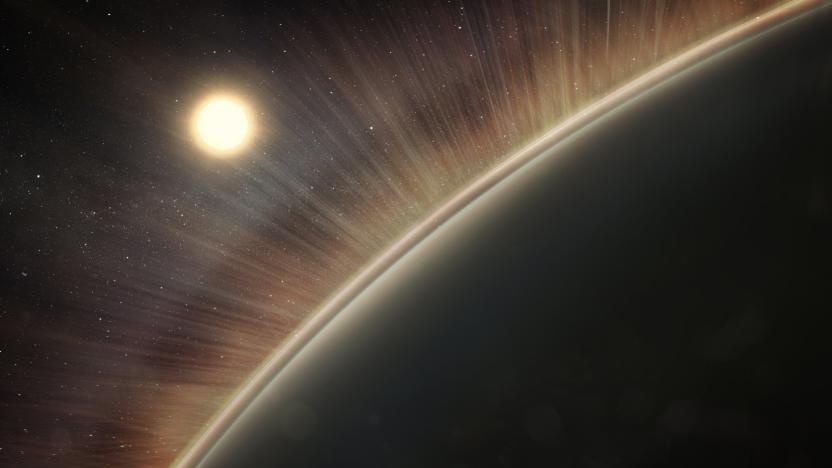
Venus' electric wind stripped its atmosphere of water
Venus is even less forgiving than scientists thought. NASA researchers have discovered that the planet has an electrical field so massive (five times larger than Earth's) that it creates a wind strong enough to strip the atmosphere of water. It's a one-two punch: the sunlight breaks the water down into hydrogen and oxygen ions, while the electric wind speeds up those ions to the point that they can escape Venus' gravity. NASA isn't certain why the field is so large, but they suspect that Venus' proximity to the Sun (and the resulting bright ultraviolet light) might play a role.

Scientists find the largest known planet to orbit two stars
The notion of planets in a Tatooine-like system with two or more stars isn't strange (they've been known since 1993), but a truly massive planet hasn't been seen before... until now. Scientists using NASA's Kepler space telescope have discovered Kepler-1647b, the largest known planet to orbit two stars (aka a circumbinary planet). The 4.4 billion year old gas giant is about as large as Jupiter, and orbits at a much further distance than other confirmed planets with a 1,107-day trip. That's still much closer than Jupiter, which takes 12 years, but it remains a rarity given our current knowledge.
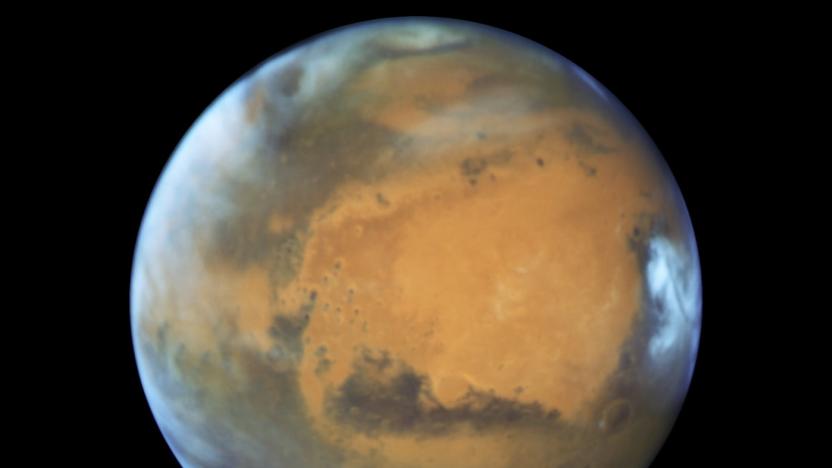
Watch Mars make its closest approach to Earth in 10 years
Mars is about to make its closest approach to Earth in the space of a decade... and this time around, it'll be trivially easy to watch this rare celestial event. Slooh is offering a live stream that will kick off around 9PM Eastern, when the sky should be dark enough to observe the Red Planet in vivid detail (the closest approach is technically at 5:34PM, around when this story went live). Gizmodo notes that you can also get a first-hand look if you point a telescope to the right of the bright star Antares.
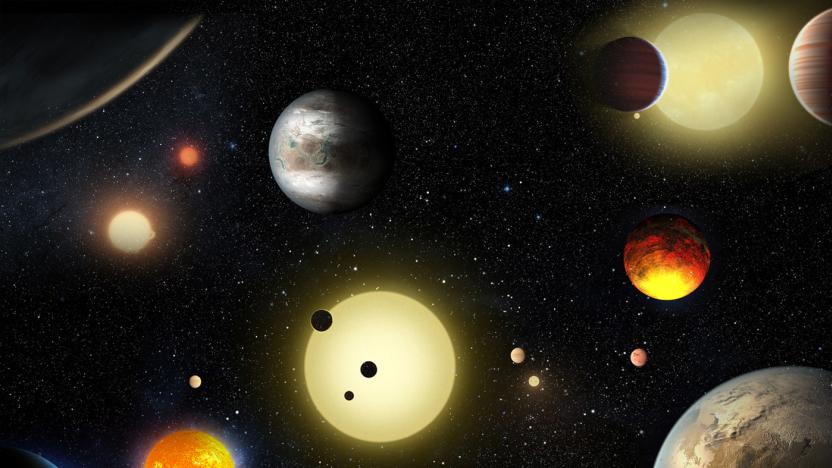
Kepler telescope finds its largest-ever batch of planets
If you think the Kepler space telescope has already spotted a lot of exoplanets, you haven't seen the half of it... almost literally. After a lot of hype, NASA's Kepler team has verified the existence of 1,284 new planets. That's more than twice as many confirmed planets as before. Almost 550 from the new batch are big enough to be Earth-like rocky planets, while nine of them are in their host star's habitable zone and have the potential to support life.
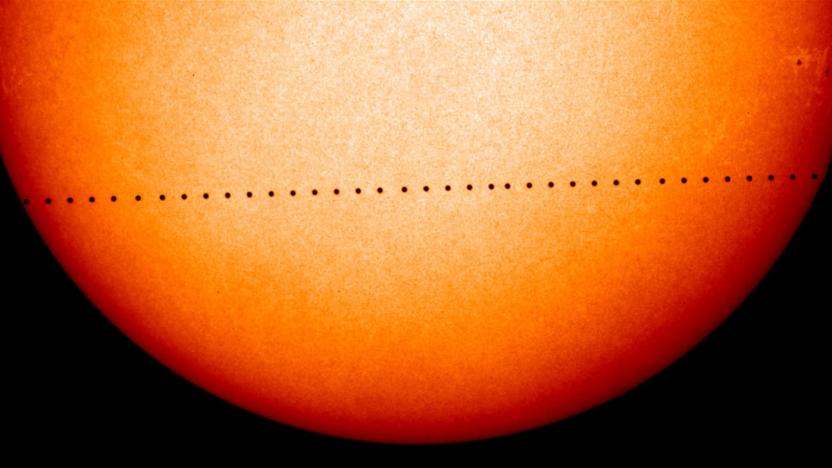
Watch Mercury cross the Sun starting at 7AM Eastern
Mercury might orbit the Sun every 88 days, but seeing it cross in front of the Sun is much rarer. That only happens roughly 13 times each century, and the technology to safely watch this happen hasn't been widely available until recently. However, you're in for a treat this time around. Mercury is poised to transit across the Sun on May 9th starting at about 7:12AM Eastern, and numerous sites (including NASA and Slooh) are offering live footage of the crossing until it finishes at around 2:42PM. Given that you probably don't have a telescope and the solar filter needed to protect your eyes, this is likely the best way to watch.
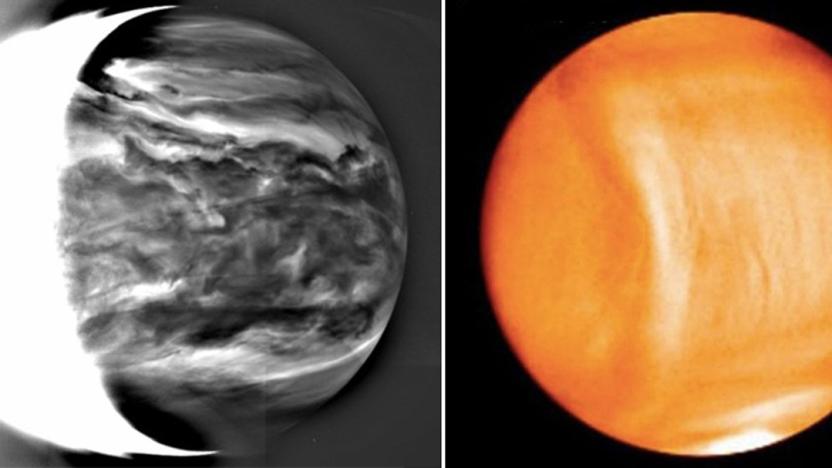
Venus probe's first detailed results reveal strange clouds
Japan's Akatsuki spacecraft almost didn't make it into orbit around Venus, but it's clear that the effort to put it back on track is paying off. The Japan Aerospace Exploration Agency recently obtained the first detailed scientific results from its once-wayward probe, and it's clear that we still have a lot to learn about our closest planetary cousin. For one thing, its clouds don't entirely behave the way researches expect. Infrared images of its dense, multi-layer cloud layers suggest that cloud formation is more complex than once thought, and the unusual bow-shaped cloud formation (shown at right) appears to rotate in sync with the surface, not the atmosphere. It's possible that features on the ground are having a strong effect on the sky.
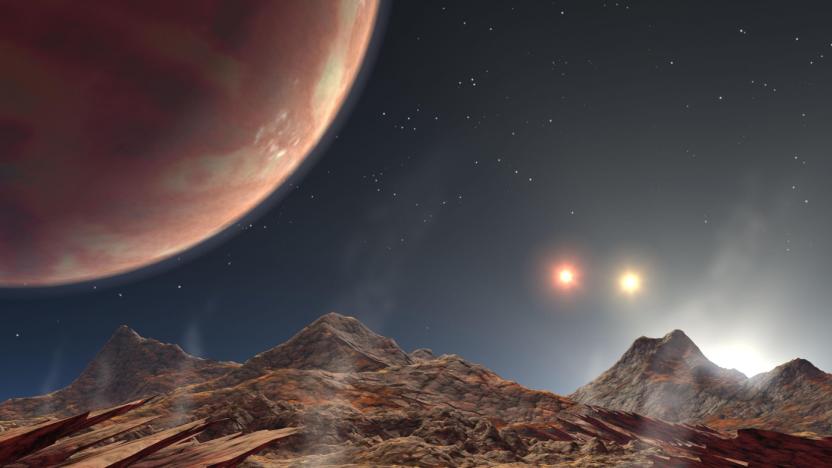
Scientists find rare 3-star system with a hot Jupiter-like planet
Any notion that star systems are boring just got tossed out the window. Thanks to sharp images from the Kilodegree Extremely Little Telescope, researchers have discovered not just a rare three-star system, but one with a "hot Jupiter" -- a gas giant orbiting close to one of its stars. The oddball planet (KELT-4Ab, shown below) revolves around a central star every three days, while the two remaining stars orbit each other every 30 years and the main star every 4,000 years.

Key ingredient of life might have come from comets
Life on Earth might not have developed as we know it without a little sprinkling of sugar from space. A new study by a group of French scientists suggests the possibility that early Earth got its first dose of the simple sugar ribose from comets. Ribose, as you might know, is an important ingredient in RNA, which is one of the three macromolecules essential for life.

NASA gives away the data from an Earth-mapping spacecraft
Want to know a whole lot about the Earth's surface? NASA and the Japanese government are now giving away all the data from the ASTER (Advanced Spaceborne Thermal Emission and Reflection Radiometer) instrument... for free. Previously, you had to pay if you wanted anything more than basic topographical maps; now, you get over 16 years' worth of near-infrared elevation and thermal data. This is mostly helpful if you're a student or a scientist, but it could be worth a peek if you've wanted to see how everything from farms to volcanoes can affect the planet's surface heat.
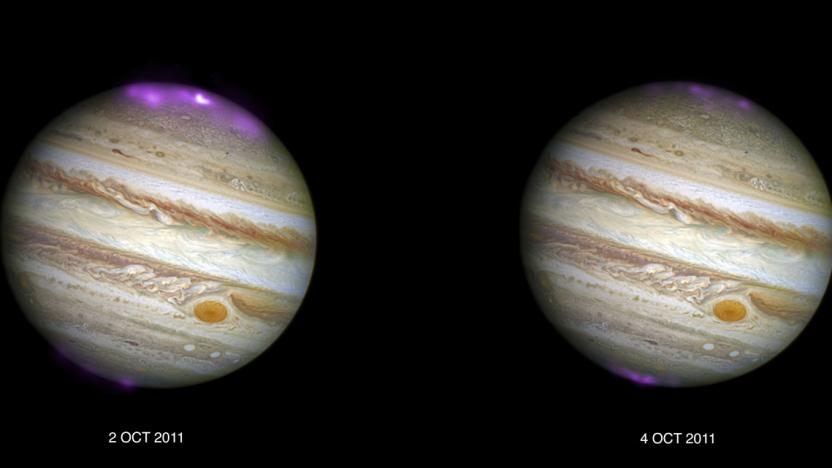
Solar storms trigger X-ray auroras on Jupiter
It's no secret that auroras are a common presence on other planets... however, you might be surprised by the ones you can't usually see. A new study using NASA's Chandra X-ray Observatory has caught solar storms creating X-ray auroras on Jupiter as they interacted with the gas giant's magnetosphere (that is, the space controlled by its magnetic field). They make Earth's northern lights seem downright quaint by comparison -- they cover areas larger than our entire home planet, and they're "hundreds of times" more energetic than what you see in the night sky.
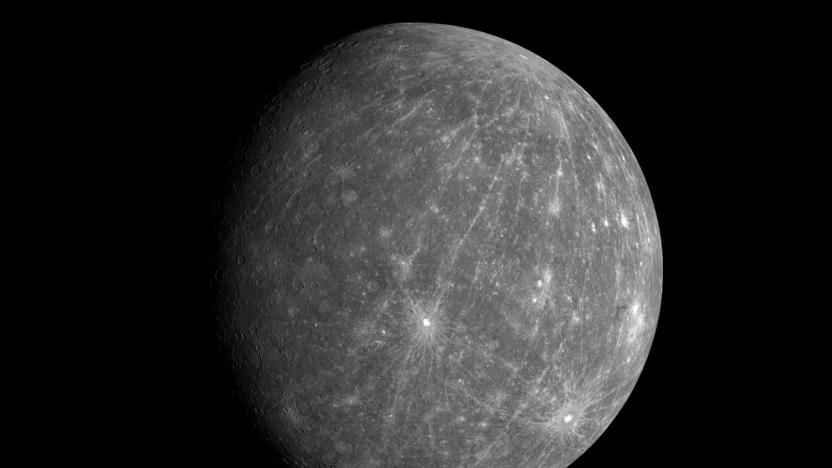
Here's why the surface of Mercury is so dark
For years, scientists have wondered why Mercury is so dark. It doesn't have as much iron and titanium as the Moon, so it should be brighter. A team at Johns Hopkins' Applied Physics Laboratory finally has the answer, though. Thanks to a spectral analysis of color images from NASA's Messenger probe, they've determined that carbon (specifically, graphite) is the probable culprit behind Mercury's dim look. Most likely, what you're seeing is the aftermath of the tiny planet growing up. As the young Mercury's magma ocean cooled 4.6 billion years ago, the graphite would have floated to the top and formed the original crust -- there just happens to be enough of it left to affect visibility.

Google neural network tells you where photos were taken
It's easy to identify where a photo was taken if there's an obvious landmark, but what about landscapes and street scenes where there are no dead giveaways? Google believes artificial intelligence could help. It just took the wraps off of PlaNet, a neural network that relies on image recognition technology to locate photos. The code looks for telltale visual cues such as building styles, languages and plant life, and matches those against a database of 126 million geotagged photos organized into 26,000 grids. It could tell that you took a photo in Brazil based on the lush vegetation and Portuguese signs, for instance. It can even guess the locations of indoor photos by using other, more recognizable images from the album as a starting point.
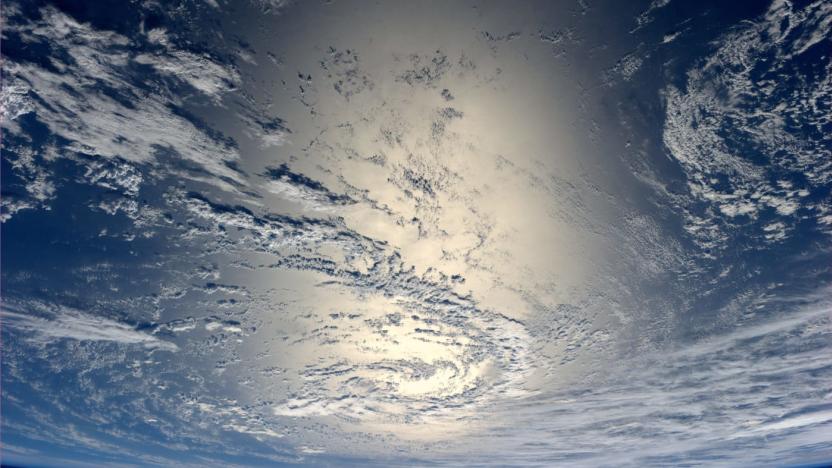
Exoplanet census suggests Earth really is special
There are an estimated 700 million trillion terrestrial planets in the observable universe. Among them, Earth may very well be one of a kind according to a new study from Uppsala University in Sweden. Astronomer Erik Zackrisson and his team have been running computer simulations to model all of the terrestrial planets that are likely to exist in the universe. The probabilistic exoplanetary statistics that they've gleaned from these simulations could potentially upend the Copernican principle and will soon be published in The Astrophysical Journal (it's currently up on arXiv).

Scientists observe the largest solar system ever discovered
Astronomers have discovered that a huge planet and star 104 light years from Earth form the largest solar system ever seen. The planet, dubbed 2MASS J2126-8140, and its red dwarf star are a full 7,000 astronomical units (AUs) apart, or a trillion miles (an AU is the distance between the Earth and the sun). Researchers previously thought the planet was "rogue," roaming the galaxy alone. In fact, they're so distant that if the star exploded, citizens of planet 2MASS wouldn't know about it for a full 62 days. Given its bizarre characteristics, however, it's unlikely that anyone lives there.

Astronomers may have found the Solar System's 9th planet
Astronomers from the California Institute of Technology (CIT) announced on Wednesday that they have found evidence to suggest that our solar system does indeed have a ninth planet -- a rather enormous one at that. This as-of-yet unnamed planet, which is being referred to as "Planet Nine" for the time being, is thought to be between five and ten times the size of the Earth and orbits so far beyond Pluto that it circles the sun just once every 10,000 to 20,000 years.

Astronomers find the first planet known to orbit a white dwarf
It's virtually certain that some white dwarfs still have planets in orbit despite their violent histories, but seeing those planets has proven difficult... at least, until now. Astronomers using the Kepler space observatory have spotted a planet circling around WD 1145+017, a white dwarf 570 light years away. Not that it's in great shape, mind you. The unusual light signature from the dying star hints that the planet is disintegrating under the star's gravitational pressure, leaving behind a giant dust cloud. Researchers suspect that it fell into its fatal orbit after the star's rapid change in mass triggered a planetary collision.

The majority of Earth-like planets haven't been born yet
Humanity's inability to find Earth-like planets may not be the result of limited technology or a lack of ambition -- we might simply be too early, and in the wrong place. Astronomers poring over Hubble and Kepler data now believe that only 8 percent of the universe's potentially habitable planets exist. Based on the amount of hydrogen and helium gas left over from the Big Bang, there's still plenty of opportunity for those planets to form. These planets are most likely to appear in either dwarf galaxies or giant galaxy clusters, where the stars haven't used up all the surrounding gas.

'Astroneer' is a planetary exploration game on a grand scale
Games like Kerbal Space Program are great at depicting the challenges of getting to another planet, but there isn't usually much to do when you arrive beyond planting a flag. Wouldn't it be nice to really, truly explore those alien worlds and make them your own? System Era may just give you that chance. Its upcoming Astroneer has you exploring and harvesting resources from vast, procedurally generated planets. You not only have to brave hostile conditions (including The Martian-like storms) and build up your base, but shape the very surface you're walking on. You can level hills, carve out tunnels and dig out artifacts buried in the soil -- think of it as Minecraft in an unfamiliar, unforgiving landscape.

Here's your clearest look yet at an alien planet in motion
That pixelated dot you see above may not seem like much, but it's a pretty big deal -- it's your best look yet at an alien world. Scientists have used the Gemini Planet Imager to capture the movement of Beta Pictoris b, a gas giant traveling around a star 60 light years away. That's no mean feat when the exoplanet is about a million times fainter than its host, requiring that the Imager block the star's light and compensate for the distortion of Earth's atmosphere. The visuals are important beyond bragging rights, we'd add, since they'll provide more insight regarding both the planet's composition and its relationship to nearby objects. Although it's going to be a long, long while (if ever) before you get clearly recognizable snapshots of an exoplanet, this abstract imagery has more than enough to keep scientists busy. [Image credit: M. Millar-Blanchaer/Dunlap Institute, F. Marchis/SETI Institute]



